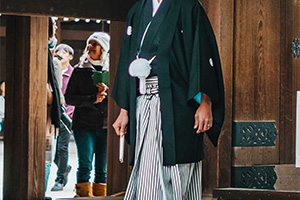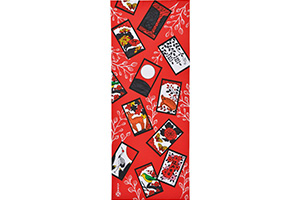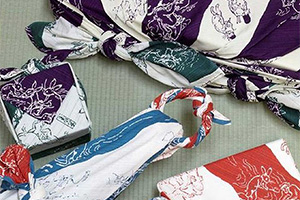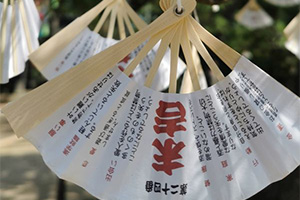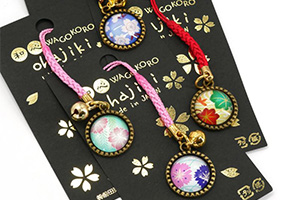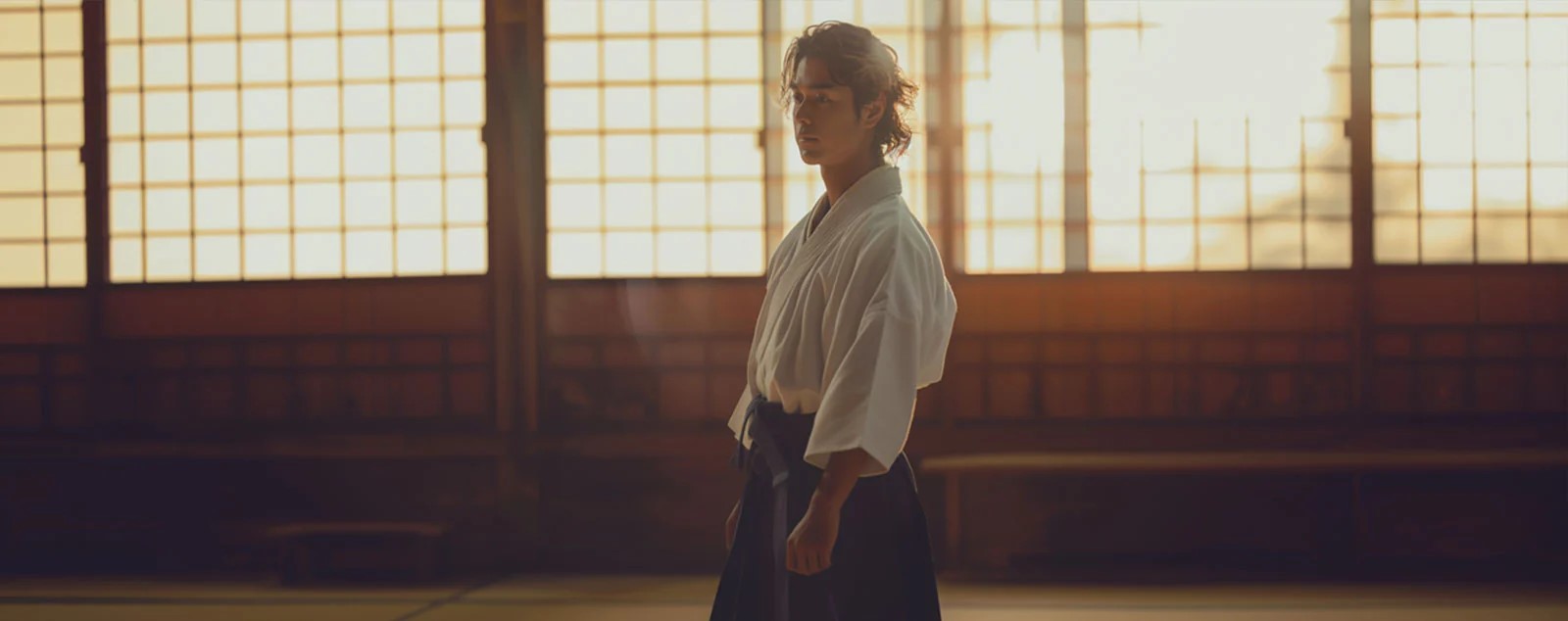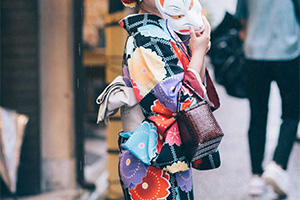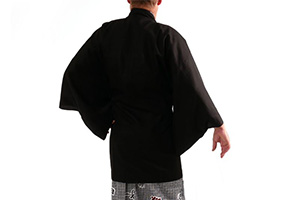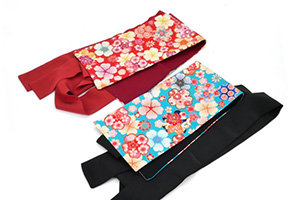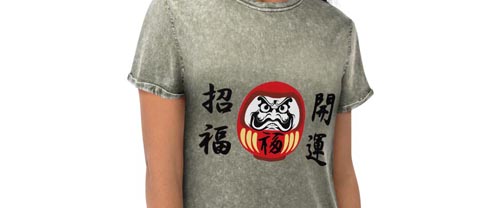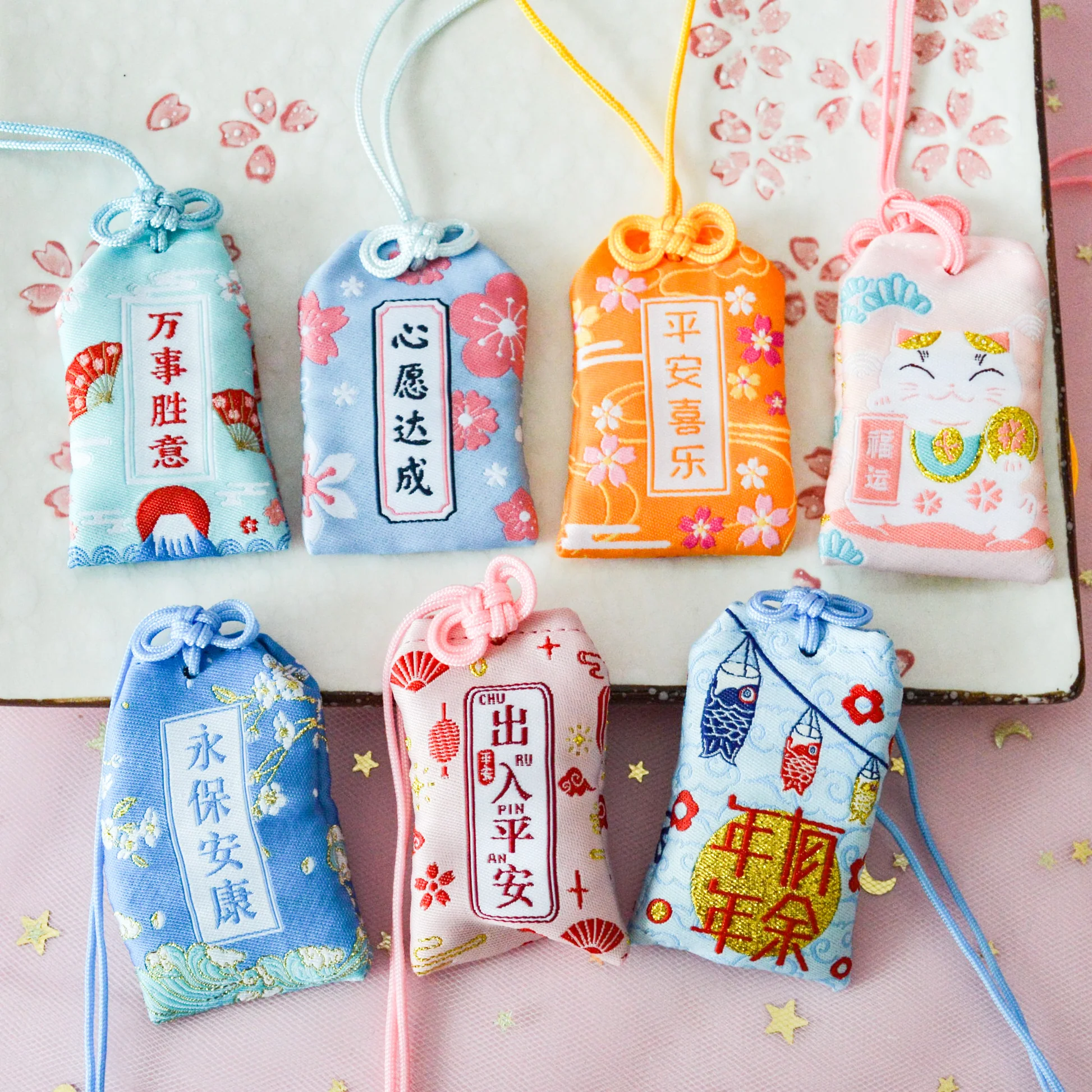Japanese clothing
What would be Japan without its traditional clothes! Here you can find socks, shoes, kimono, yukata, happi and many accessories to compose your outfit.
Traditional Japanese clothing is a symbol of Japanese history and culture. Traditional clothing has evolved over the centuries to become modern clothing while retaining its uniqueness. In this article, we will look at the different types of Japanese traditional clothing, especially men's and women's kimono and yukata, tenugui, furoshiki, fashion accessories, fans, shoes and Japanese tabi socks.
Kimono and yukata for men
Kimono is a traditional Japanese garment worn by both men and women. It is often considered a ceremonial or celebratory garment. The men's kimono is often dark in color, with simple patterns and clean lines. It is worn with an obi, a wide belt that is tied in the back. Men also wear traditional underwear called "fundoshi" under their kimono.
The yukata is a light cotton kimono, often worn in summer or for festivals. It is also worn with an obi, but it is usually easier to tie than the traditional kimono. Men often wear yukata in bright colors and more intricate patterns.
Women's Kimono and Yukata
Women's kimono is often more colorful and complex than men's. The patterns and colors may vary depending on the occasion or season. Women also wear an obi, but it is often wider and more ornate than the men's.
Women's yukata is also very popular, especially during the summer. Women's yukata are often pastel colored, with floral or nature motifs.
Haoris
The haori is a light jacket worn over a kimono or yukata. It can be solid color or decorated with traditional Japanese patterns.
Tenugui
Tenugui are cotton towels used for a variety of purposes, including wiping sweat during sports activities, as decorations for events or to protect the head from the sun. Tenugui are available in a variety of patterns and colors, ranging from traditional to modern designs.
Furoshiki
Furoshiki are squares of fabric used to wrap gifts or carry objects. They can be tied in different ways to create bags or envelopes. Furoshiki are often decorated with traditional or modern designs and are available in a variety of sizes.
Traditional fashion accessories include wooden hairpins, kanzashi (hair ornaments) and fans. Wooden hairpins, called kanzashi, are often decorated with floral motifs and can be used to hold the hair in place. The fans, called sensu, are often decorated with traditional or modern motifs and can be used to cool off in summer or to add a touch of style to an outfit. Japanese fashion accessories include hachimaki, a headband worn to absorb sweat, as well as Japanese jewelry, keychains and obis. Obis are wide belts that are tied around the waist to complete a kimono or yukata.
The Japanese fans
Japanese fans are often used as fashion accessories or to cool off on hot summer days. Traditional fans, called sensu, are often made of washi paper or silk and are decorated with traditional or modern motifs.
Japanese shoes
Traditional Japanese shoes include geta and zori. Geta are wooden sandals with a high sole, while zori are straw or rubber sandals with a lower sole. Traditional shoes are often worn with tabi socks.
Japanese tabi socks
Tabi socks are traditional Japanese socks that have separate toes to allow you to wear traditional shoes. The tabi are often made of cotton and are available in a variety of colors and patterns. Tabi are often worn with geta or zori, but can also be worn with modern shoes.
Omamori are traditional Japanese amulets used for good luck and protection. They are often sold at Shinto shrines and Buddhist temples, each serving a specific purpose, such as safety during travel, academic success, or health. Omamori are made from embroidered fabric and contain prayers or sacred objects inside. They are kept in a small pouch, and it's customary not to open them to maintain their effectiveness. Available in various colors and shapes, they are a popular symbolic gift in Japan.
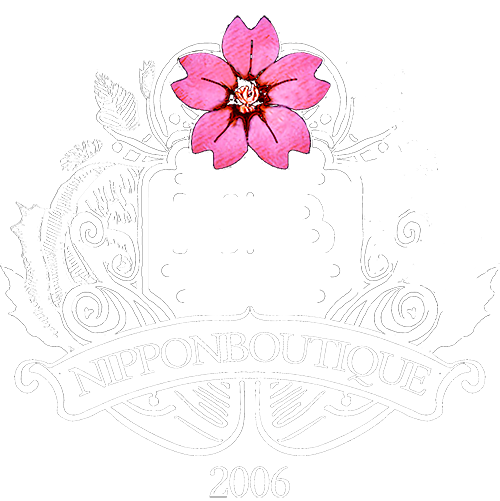
.jpg)

















































































